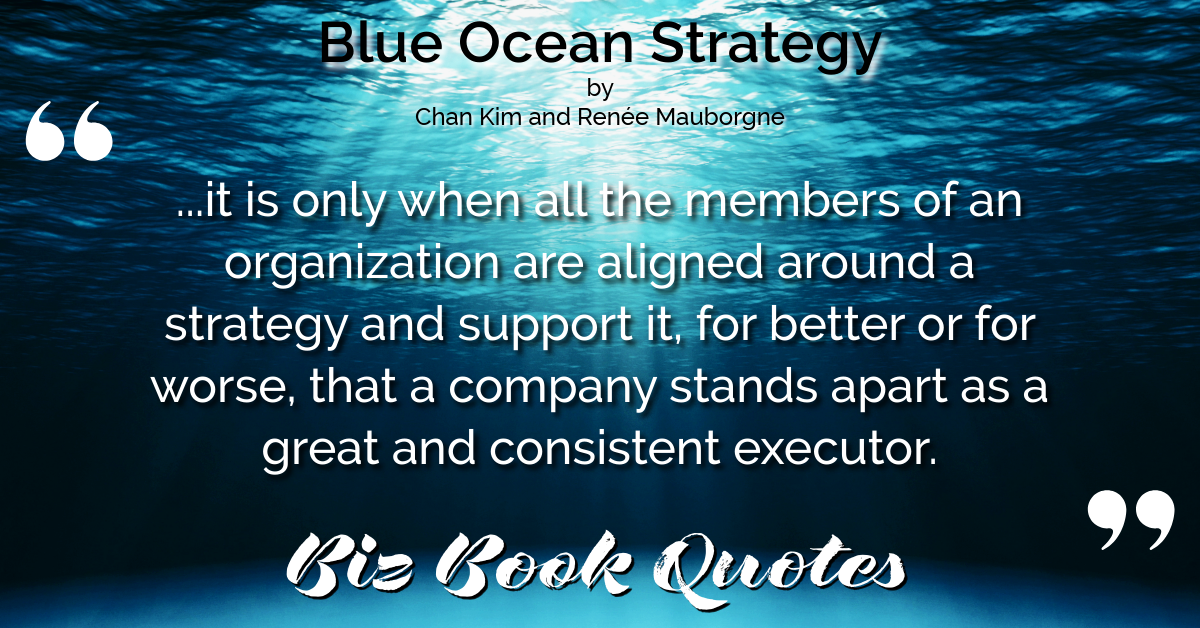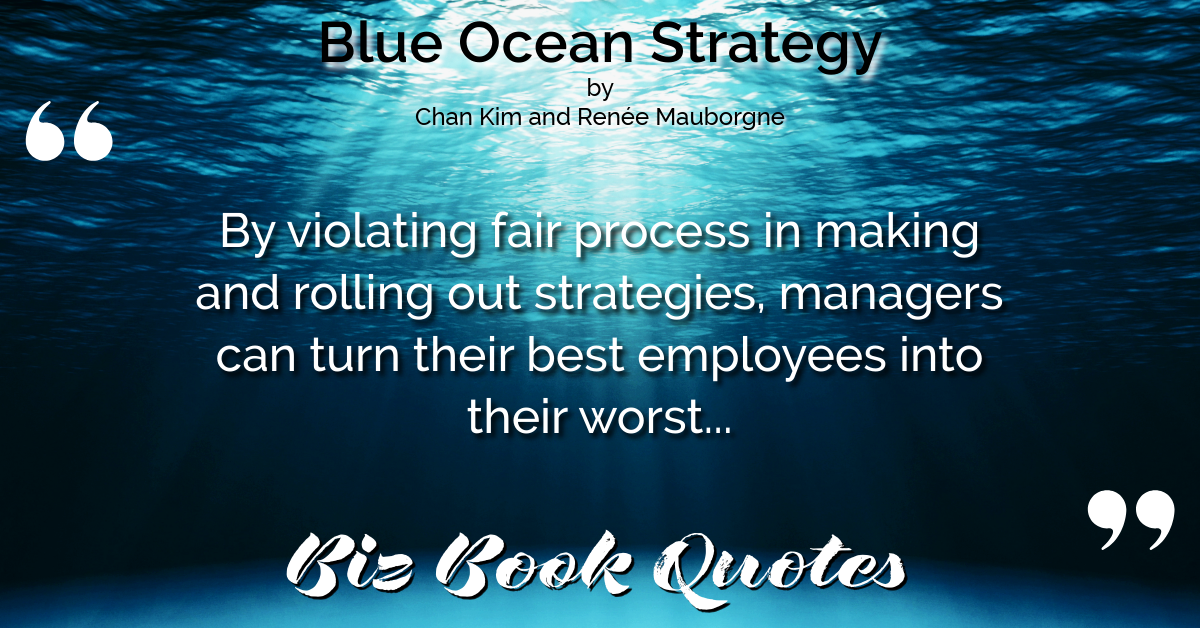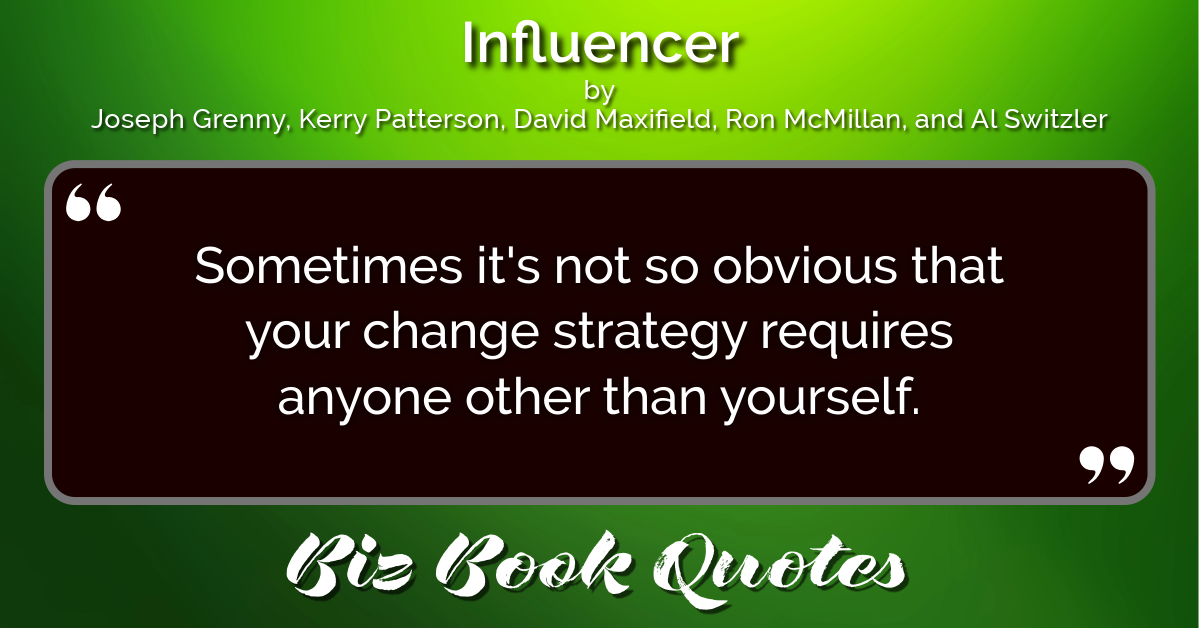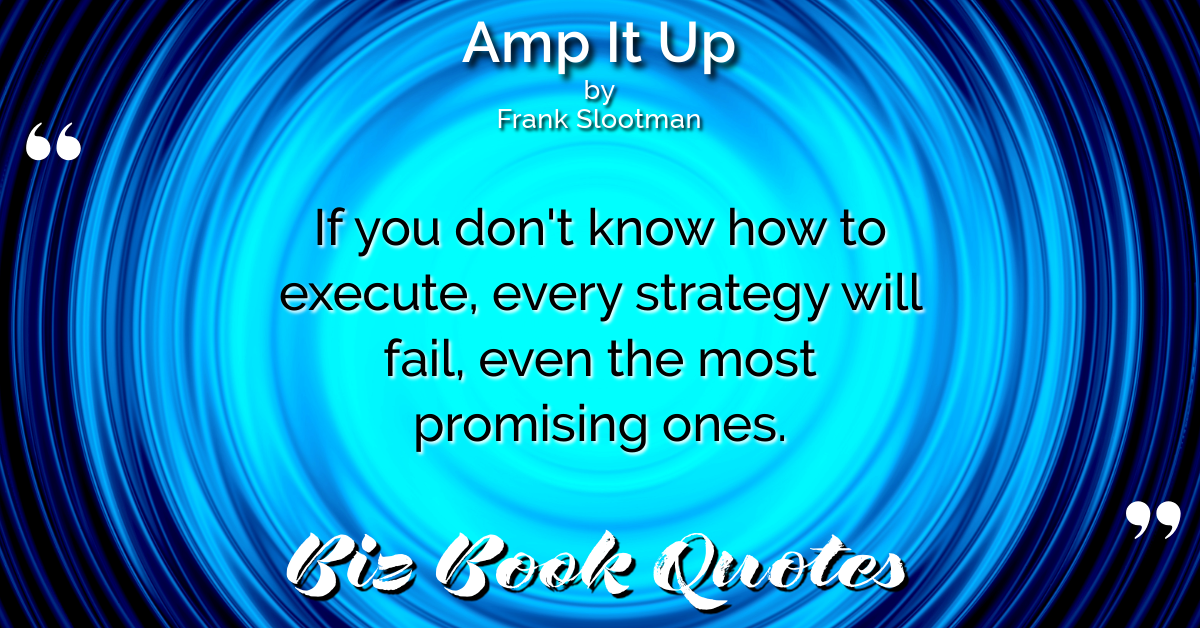 |
…it is only when all the members of an organization are aligned around a strategy and support it, for better or for worse, that a company stands apart as a great and consistent executor.
|
171 |
 |
You must create a culture of trust and commitment that motivates people to execute the agreed strategy – not to the letter, but to the spirit.
|
171 |
 |
People…must embrace [the strategy] so that at the level of the individual, people embrace it of their own accord and willingly go beyond compulsory execution to voluntary cooperation in carrying it out.
|
171 |
 |
When fair process is exercised in the strategy-making process, people trust that a level playing field exists.
|
175 |
 |
By violating fair process in making and rolling out strategies, managers can turn their best employees into their worst…
|
181 |
 |
Transformation… happens less by grand design or careful strategy than by the small wins that result from ongoing practice that enhance our capacity to change.
|
087 |
 |
Initially, failure signals the need for greater effort or persistence. Sometimes failure signals the need to change strategies or tactics. But failure should rarely signal that we’ll never be able to succeed.
|
135 |
 |
Sometimes it’s not so obvious that your change strategy requires anyone other than yourself.
|
194 |
 |
…coordinated goal-setting strategy [OKRs] is easy to say and very hard to do.
|
225 |
 |
If you don’t know how to execute, every strategy will fail, even the most promising ones.
|
055 |